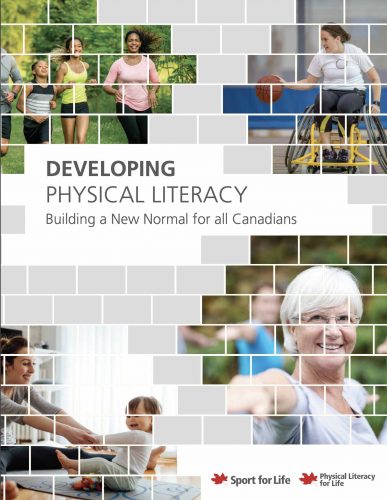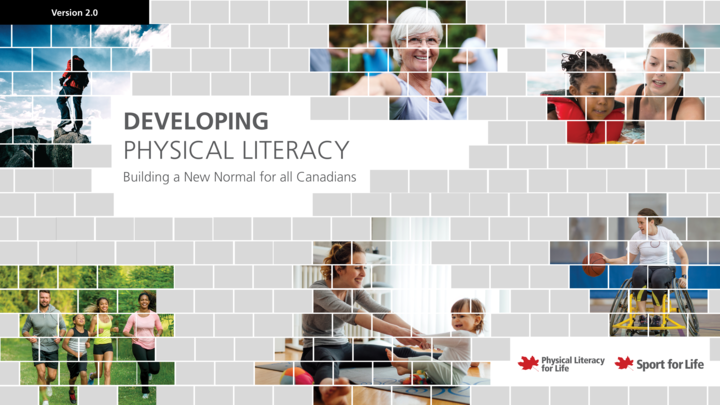Developing Physical Literacy, Take two!
 Physical literacy is a journey, not a destination, which means you can spend your whole life developing it. In Sport for Life’s latest resource Developing Physical Literacy: Building a New Normal for All Canadians, movement enthusiasts can find plentiful information not only on how to move, but how to get others moving as well.
Physical literacy is a journey, not a destination, which means you can spend your whole life developing it. In Sport for Life’s latest resource Developing Physical Literacy: Building a New Normal for All Canadians, movement enthusiasts can find plentiful information not only on how to move, but how to get others moving as well.
“We were absolutely staggered by the reaction to the first version of Developing Physical Literacy that we published in 2007–A Guide for Parents of Children ages 0 to 12–and it’s been such a treat to see the impact it’s had over the past decade. That being said, physical literacy is constantly evolving so we needed a new iteration,” said Sport for Life CEO Richard Way.
“For this latest version we mobilized some of the leading minds in the physical literacy movement and incorporated cutting edge research. We couldn’t be more excited to see the impact this will have.”
Developing Physical Literacy: Building a New Normal for All Canadians, which was published as a joint venture between Sport for Life and its charitable arm, Physical Literacy for Life, was a collaborative effort from writers Dr. Colin Higgs, Dr. John Cairney, Dr. Paul Jurbala, Dr. Dean Dudley, Richard Way and Drew Mitchell, among others. They worked alongside a host of other talented reviewers to produce a text that would attempt to address Canada’s inactivity crisis.
“In the past, children developed physical literacy, in part, through regular unstructured play, and the vast majority of adults maintained their physical literacy through daily vocational activities and other forms of habitual physical activity,” it reads.
“However, in today’s world children are much less frequently engaged in unstructured play, and adults are increasingly sedentary at work and at home.”
Throughout the text, Developing Physical Literacy’s authors emphasize how physical literacy should be given the same importance as literacy and numeracy, arguing that it should be fostered at an early age so it can be developed throughout the life course. This will lead to better physical and mental health outcomes, as well as aiding in injury prevention. It can also have an impact on the sporting world.
“To excel at the top levels of competitive sport and performance arts such as dance or circus, most individuals need to develop superlative physical literacy. Competitors and performers at the national and international level, both professional and amateur, require advanced movement proficiency far beyond the average person,” it reads.
“This demands the most thorough expression of physical literacy that one can imagine.”
Throughout the resource, readers will learn both about the history and definition of physical literacy while seeing how different countries approach the concept. It includes Canada’s Physical Literacy Consensus Statement, which was developed in June 2015, as well as information from Sport for Life’s Long-Term Development in Sport and Physical Activity framework.
The amount of research that has been done on physical literacy since 2007 has been significant, and that research is reflected in the text. With graphics, charts and other illustrations, the resource tries to break physical literacy concepts down into digestible form, making them accessible for everyone from academics to recreation programmers.
And once it’s out in the world, Way believes it could radically change people’s thinking and act as a catalyst for lasting change.
“We needed this text to be able to reach across sectors, across generational and societal divides, to truly have the impact we envision. As we like to say here at Sport for Life, we can’t be moving forward together if we’re leaving anyone behind.”

